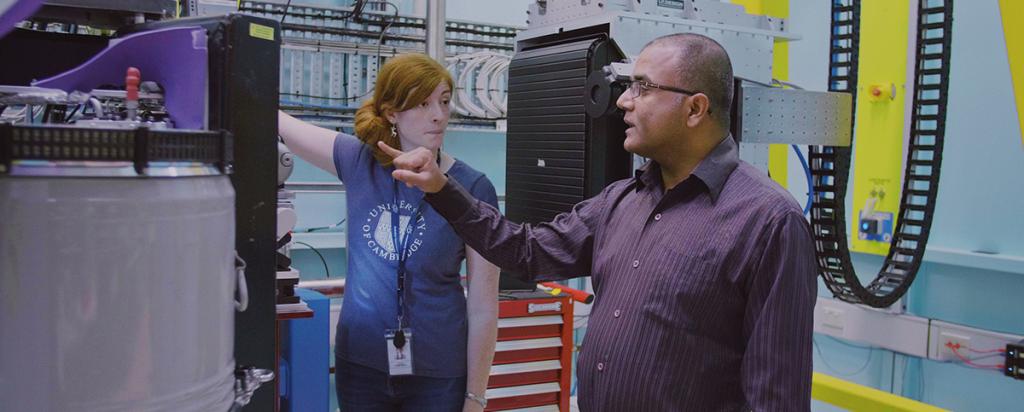

Beamtime Guide, Technical Info and Updates - MX1 & MX2
Beamtime guide
Proposals
Research scientists who would like to apply for time on the Macromolecular Crystallography beamlines should refer to the User Office webpages for the most current information and downloads associated with this beamline. Proposal deadlines are detailed here.
Any user group with questions regarding the technical capabilities of the beamline, or the suitability of the beamline for the analysis of their samples, should feel free to contact the Principal Beamline Scientist (contact details appear on the Staff webpage for this beamline). For further information on the Beamtime Proposal process, please contact the User Office directly.
Preparing your visit
Information on all administrative steps following a successful proposal (user access, experiment authorisations and safety inductions) can be found here.
Full sample description requirements for Experiment Authorisation Forms can be found in the MX UserWiki (authentication required- please ask beamline staff for login details):
Beamline specific features
| MX1 | MX2 | |
|---|---|---|
| Energy range (user controlled) (keV) | 8-18 | 8-21 |
| Beamsize at sample position (FWHM HxV) (µm) | 120 x 120 | 25 x 15 |
| Camera zoom | fixed length camera (5X) | zoom camera (8X) |
| Minimum recommended crystal size | protein crystals >50µm; chemical crystals as small as 10µm (with strongly scattering elements) | protein crystals >10µm; chemical crystals as small as 5µm (with strongly scattering elements) |
| Detector | Dectris Eiger2 9M | Dectris Eiger 16M |
| Additional features | UV laser Mini Kappa High pressure diamond-anvil cells LEDs for photocrystallography | Micro-collimator |
Features common to both beamlines
- Local/ remote beamline operation; remote access through HTML5 VNC client Guacamole
- Automated scans of metal edges for MAD and excitation scans
- Active beam position steering
- Autoindexing upon collection of test diffraction shots
- Autoprocessing of datasets
- Sample mounting robot (SSRL type) accepting both SSRL cassettes and unipucks without lids; sample exchange time ~30 sec (centering time excluded); optional manual mounting of crystals directly onto goniometer
- User changeable sample light intensity
- On the fly data quality assessment when collecting a dataset
- ColdMountPro! for mounting crystals at temperatures down to -60°C under a flow of nitrogen gas
Techniques available
- High resolution single wavelength anomalous dispersion (SAD)
- Multiple wavelength anomalous dispersion (MAD)
- Radiation damage induced phasing (using UV laser on MX1)
- Variable temperature experiments
- High pressure crystallography
- Photocrystallography
Technical updates
MX1
- Dectris EIGER 2 9M detector
- Upgraded sample camera optics: High-res sample video microscope (coincident with the beam) for alignment of crystals to the X-ray beam embedded in the User Interface. The new AreaVision interface allows users to take snapshots of their crystals in .jpg format.
- Sample mounting microscopes, including a Leica M205C stereo microscope with (maximum) 20.5:1 zoom. Allows overview and detail observation using one instrument.
- Upgraded data security. Users will be now issued with a one-time password for use during their beamtime. This password will not work outside those beamtime hours. Access to user data after that time will be via VBL (virtual beamline).
- User changeable energy (energy range 8.5-17.5 keV).
- Vortex EX90 Si-drift fluorescence detector available.
- Mini Kappa goniometer for full diffraction sphere coverage.
- Auto Rickshaw high-throughput data analysis
- Photo-chemistry
- High pressure diamond-anvil cells
Coming soon
- Screening server
- CX-ASAP high-throughput data analysis for chemical crystallography
MX2
- Dectris EIGER 16M detector
- Sample mounting microscopes, including a Leica M205C stereo microscope with (maximum) 20.5:1 zoom. Allows overview and detail observation using one instrument.
- User changeable energy is available. It is fully automated via new beam-steering feedback function. This is also enabled by the new AreaVision camera interface.
- Upgraded data security. Users will be now issued with a one-time password for use during their beamtime. This password will not work outside those beamtime hours. Access to user data after that time will be via VBL (virtual beamline).
- Replacement MX2 sample motors with improved accuracy for positioning sample in the beam.
- Micro collimator that can produce beam sizes of <10µm (please notify beamline staff ahead of your beamtime if you would like to use the micro collimator)
- Rastering
- Auto Rickshaw high-throughput data analysis
- Photo-chemistry
Coming soon
- Fast rastering
- CX-ASAP high-throughput data analysis for chemical crystallography
Acknowledgements
MX acknowledges the support of the Australian Cancer Research Foundation (ACRF):

